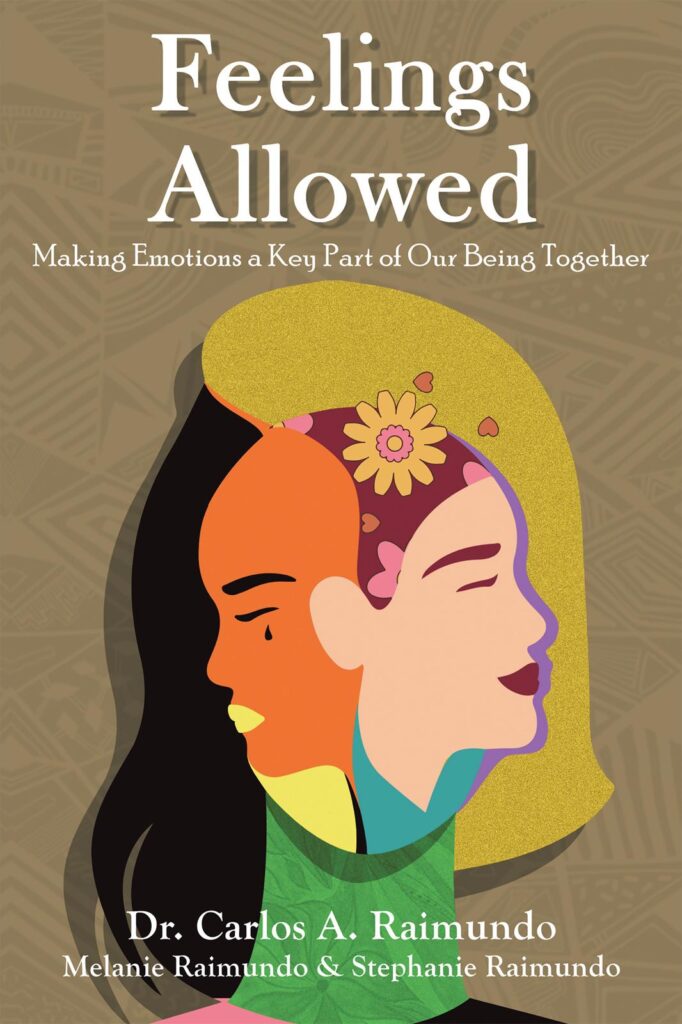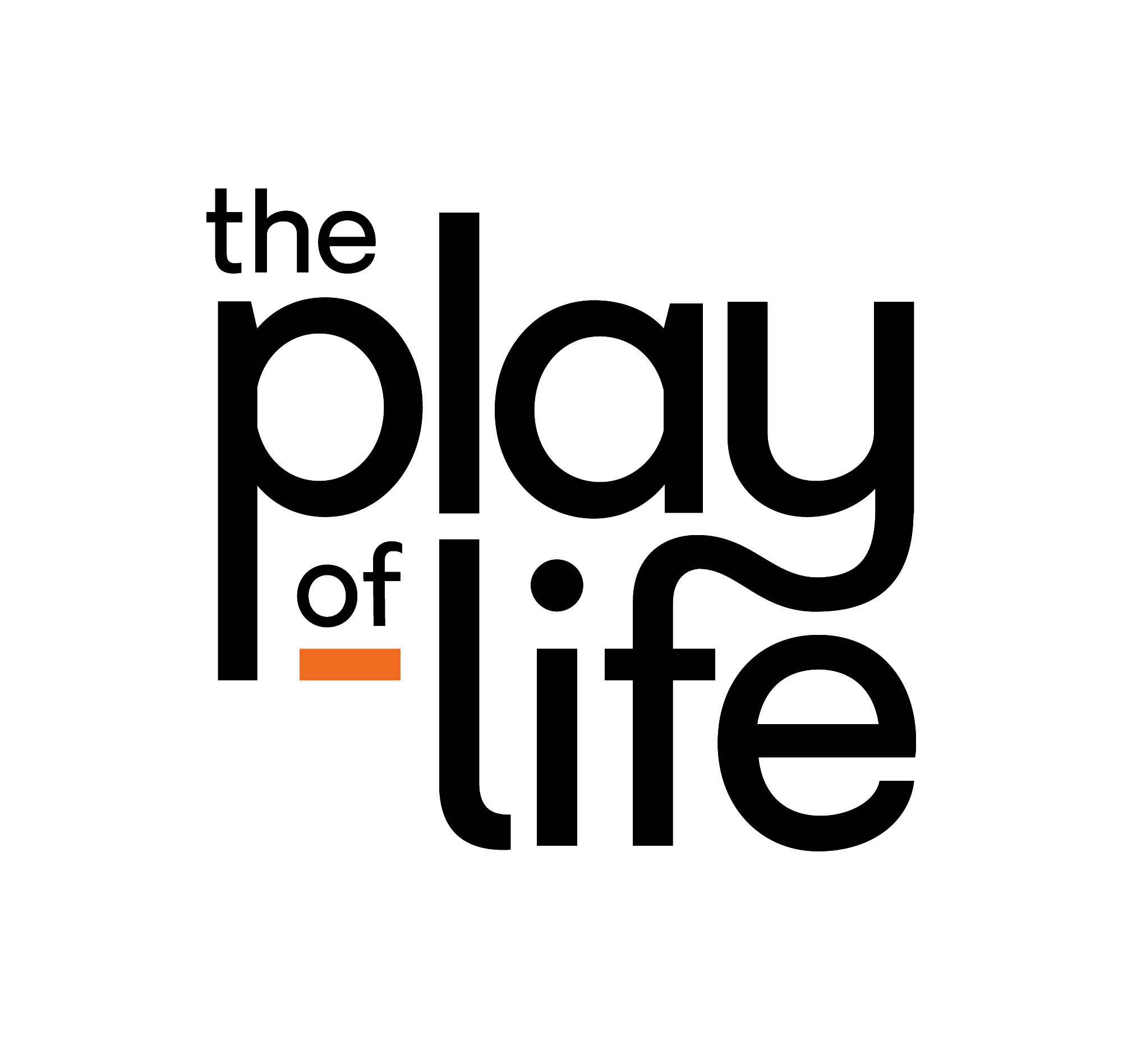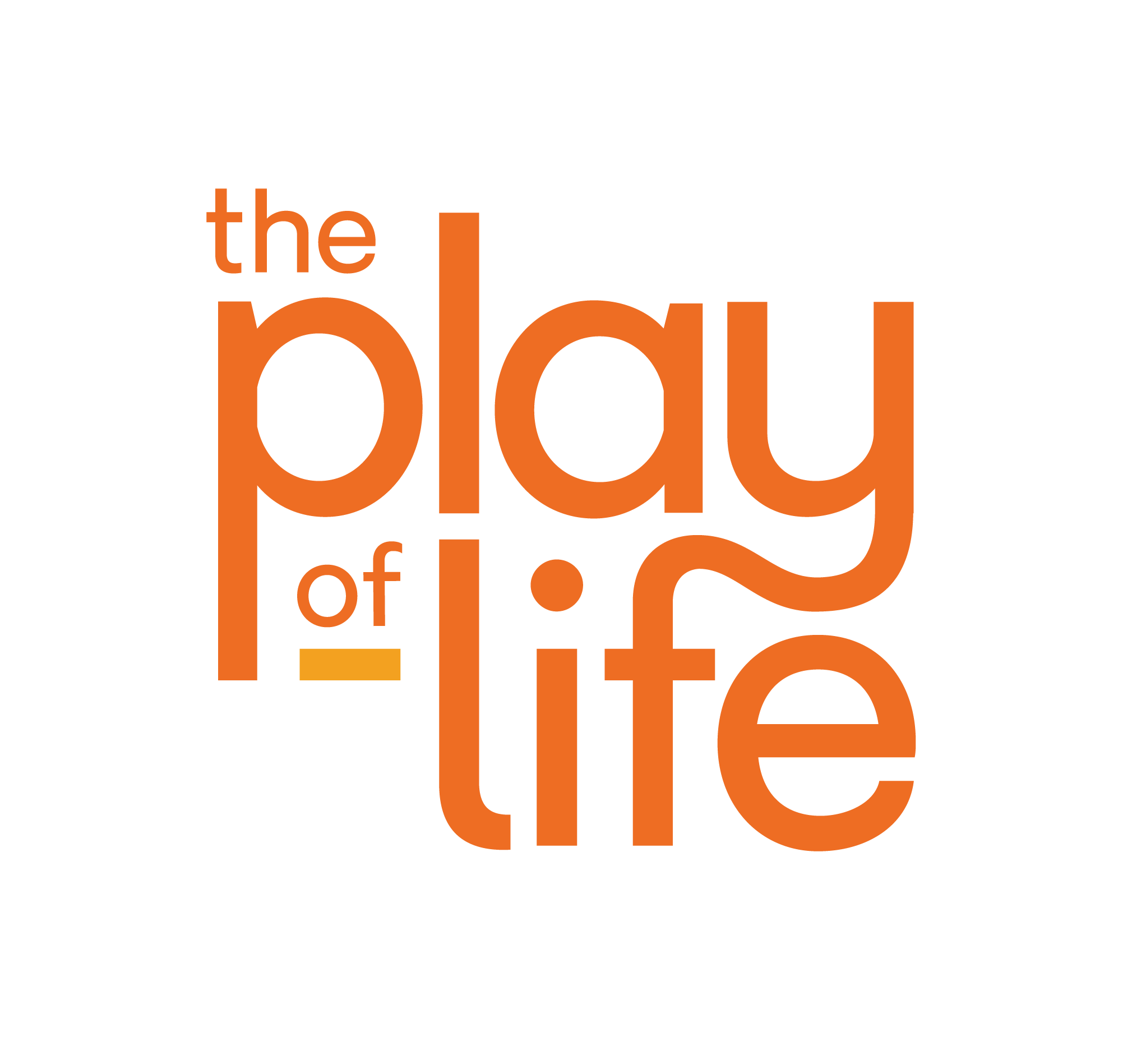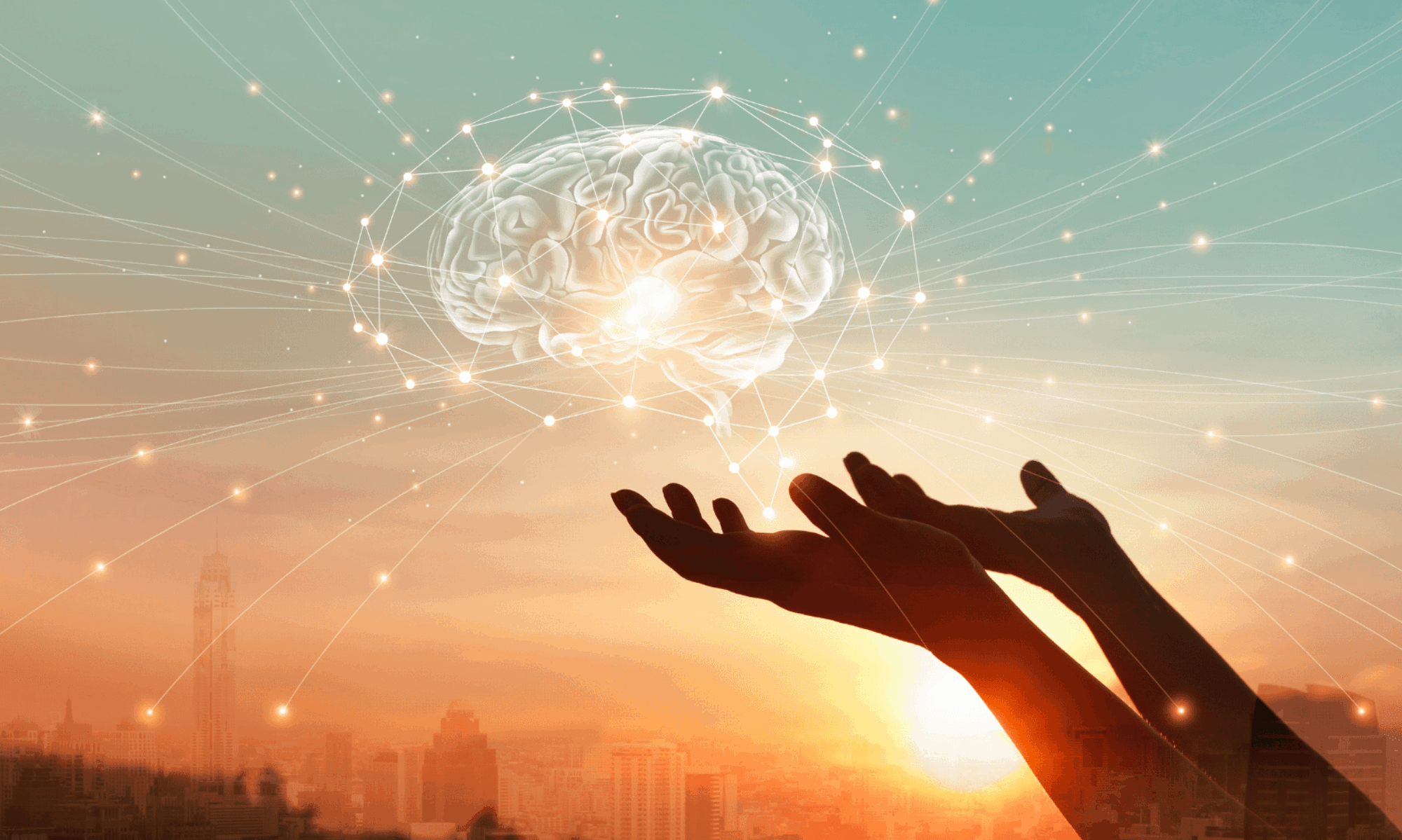Embracing Emotions, Finding Freedom
In Feelings Allowed, Dr Carlos Raimundo blends neuroscience, storytelling, and decades of experience in psychodrama and psychotherapy to offer a powerful guide to embracing the full range of human emotions—without fear or judgment.
Each feeling, from joy and love to sadness and resentment, is a messenger guiding you toward deeper truths about yourself and your relationships. With gentle insights and practical exercises, Feelings Allowed helps you heal old wounds, strengthen connections, and break free from self-limiting narratives.
A perfect companion for those on a therapeutic journey, this book expands the healing process and reveals hidden emotions waiting to be explored.
If you enjoyed Brené Brown’s Atlas of the Heart or seek to weave science with personal growth, Feelings Allowed will inspire you to live with greater emotional clarity and courage—because every emotion is part of your story, and every feeling is allowed.
You can Contact the Author or send your comments at the end of this page.

Testimonies
Cathy Bishop,
Founder Big Leap Coaching & Consulting,
Heartstyles Associate, South Africa
Feelings Allowed is a true treasure, warm, wise, and wonderfully practical. With bite-sized insights and rich emotional guidance, it weaves tools like Play of Life and the Enneagram through heartfelt stories. It will be a daily companion for me, and for navigating emotions with my daughter. A must-read for those in counselling, seeking self-help, and a valuable resource for coaches, educators, and therapists alike.
Erica Michaels Hollander,
JD, PhD, TEP.
Feelings Allowed is a gentle set of suggestions for grappling with emotions on the surface and hidden. The illustrations offered are clear and convincing, and the discussion of ways that some hidden emotions are manifested very helpful.
Buy the book
Feelings Allowed: Making Emotions a Key Part of Our Being Together
by Dr. Carlos A. Raimundo, Melanie Raimundo & Stephanie Raimundo
Purchase within Australia:
Select one of the stores below depending on your country of residence

Chapter Synopsis
Each chapter Summary, Takeaways and References
You can approach this book in whatever way suits you best:
- Read it from beginning to end, pausing to reflect and apply insights as you go.
- Keep it theoretical, skipping the personal reflection exercises if you prefer.
- Browse by flipping through the pages, noticing titles and key words that catch your attention, and spend time on those sections.
- Use the contents page to go straight to a topic that interests you.
Whichever path you take, remember this:
Emotions shape the way we think.
It may feel confronting, but it is true.
Recognising this gives you the power to notice, name, and begin to transform how you live.
Summary:
This introduction opens the book with a central theme: emotional permission. Dr Carlos A. Raimundo invites the reader into a journey of allowing feelings to surface without fear, judgment, or avoidance. He asserts that emotions are not disruptions, but signals for connection, growth, and healing.
Takeaways:
Emotions offer insight into who we are and what we need.
Suppressing emotions leads to disconnection from self and others.
Giving ourselves permission to feel is foundational to mental and relational health.
References:
Brown, B. (2012). Daring greatly: How the courage to be vulnerable transforms the way we live, love, parent, and lead. Avery.
Neff, K. D. (2011). Self-compassion: The proven power of being kind to yourself. William Morrow.
Summary:
This chapter emphasises that feeling deeply is part of living fully. Emotions colour our existence and are integral to our values, choices, and vitality. Emotional health does not mean being free of negative emotions, but rather being able to feel and integrate them meaningfully.
Takeaways:
Fully living includes making space for both joy and sorrow.
Emotions reflect what matters most to us.
Emotional presence enhances relational and personal integrity.
References:
Frankl, V. E. (1959). Man’s search for meaning. Beacon Press.
Fosha, D. (2000). The transforming power of affect: A model for accelerated change. Basic Books.
Summary:
Relationships are the mirror and the amplifier of emotional life. This section discusses the inherited and habitual emotional roles we adopt, often without awareness, and how these affect our interactions. Recognising patterns allows for greater empathy and choice.
Takeaways:
Emotional habits are formed in early relational dynamics.
Awareness of these patterns allows for transformation.
Relational healing requires conscious emotional presence.
References:
Bowlby, J. (1988). A secure base: Parent-child attachment and healthy human development. Basic Books.Siegel, D. J. (2012). The developing mind (2nd ed.). Guilford Press.
Summary:
Forgiveness is explored as an emotional and spiritual practice that liberates the one who forgives. It is not about excusing harm, but about releasing ourselves from the grip of resentment. True forgiveness integrates truth, grief, and boundaries.
Takeaways:
Forgiveness is a process, not a feeling.
It benefits the forgiver more than the forgiven.
Emotional healing often hinges on the capacity to forgive.
References:
Tutu, D., & Tutu, M. (2014). The book of forgiving. HarperOne.
Enright, R. D. (2001). Forgiveness is a choice: A step-by-step process for resolving anger and restoring hope. American Psychological Association.
Summary:
Grace is presented as an emotional attitude of generosity, acceptance, and humility. In relationships, grace softens judgment and creates space for healing. It allows us to meet ourselves and others with compassion rather than criticism.
Takeaways:
Grace disrupts cycles of shame and reactivity.
It fosters emotional spaciousness in relationships.
Offering grace often begins with receiving it.
References:
Yancey, P. (1997). What’s so amazing about grace? Zondervan.
Brown, B. (2015). Rising strong. Spiegel & Grau.
Summary:
This chapter explores the connection between emotional awareness and mindfulness. Presence is not just a mental state—it is emotional attunement to what is happening now. Emotional grounding happens when we stay with what is, rather than escaping to the past or future.
Takeaways:
Emotional presence requires practice and self-kindness.
Mindfulness builds resilience and emotional regulation.
The present moment is where healing begins.
References:
Kabat-Zinn, J. (2005). Wherever you go, there you are. Hachette Books.
Nhat Hanh, T. (1991). Peace is every step. Bantam.
Summary:
This chapter presents scientific insights into the impact of gratitude on emotional and neurological wellbeing. Gratitude increases resilience, enhances mood, and rewires the brain for positivity. It is an emotional muscle that grows through practice.
Takeaways:
Gratitude strengthens neural pathways for wellbeing.
Regular practice increases long-term emotional balance.
Gratitude coexists with pain—it doesn’t erase it.
References:
Emmons, R. A., & McCullough, M. E. (2003). Counting blessings versus burdens: An experimental investigation of gratitude and subjective well-being in daily life. Journal of Personality and Social Psychology, 84(2), 377–389.
Hanson, R. (2013). Hardwiring happiness: The new brain science of contentment, calm, and confidence. Harmony.
Summary:
Emotions are not just reactions—they are foundational to identity. This section explores the role emotions play in constructing meaning, values, and self-concept. Emotions are central to cognition, memory, and decision-making.
Takeaways:
Emotions shape how we perceive and interpret the world.
They are integral to personal identity and moral values.
Emotional literacy is key to personal development.
References:
Damasio, A. R. (1999). The feeling of what happens: Body and emotion in the making of consciousness. Harcourt.
LeDoux, J. (1996). The emotional brain: The mysterious underpinnings of emotional life. Simon & Schuster.
Summary:
This chapter discusses how emotions often arise before we can cognitively name them. The body reacts first—through breath, posture, or tone—and only later do we find language. Learning to listen to these early cues builds emotional fluency.
Takeaways:
Emotional signals often precede verbal awareness.
The body is a key emotional communicator.
Somatic awareness enhances emotional intelligence.
References:
Porges, S. W. (2011). The polyvagal theory: Neurophysiological foundations of emotions, attachment, communication, and self-regulation. Norton.
Ogden, P., Minton, K., & Pain, C. (2006). Trauma and the body. Norton.
Summary:
Feelings often remain unspoken in our communication. This chapter encourages naming emotions explicitly, using emotional vocabulary, and fostering spaces where it is safe to be vulnerable. Emotional honesty builds trust and clarity.
Takeaways:
Naming emotions strengthens relational connection.
Emotional communication reduces misunderstandings.
Feelings need to be seen and spoken, not just sensed.
References:
Rosenberg, M. B. (2003). Nonviolent communication: A language of life. PuddleDancer Press.
Gottman, J. M., & Silver, N. (1999). The seven principles for making marriage work. Crown.
Summary:
This section explores the phenomenon of learned helplessness—when people stop trying to change or respond emotionally due to repeated failure or trauma. It impacts motivation, emotional expression, and self-belief.
Takeaways:
Emotional paralysis often arises from unmet needs or unprocessed trauma.
Restoring agency requires supportive, validating environments.
Emotional numbness is a survival strategy, not a flaw.
References:
Seligman, M. E. P. (1975). Helplessness: On depression, development, and death. Freeman.
van der Kolk, B. A. (2014). The body keeps the score. Viking.
Summary:
This chapter defines emotional intelligence (intra-personal) and social intelligence (inter-personal), emphasising that both can be learned and strengthened. These competencies are vital for healthy communication, leadership, and self-regulation.
Takeaways:
Emotional intelligence fosters self-awareness and regulation.
Social intelligence enhances empathy and interpersonal skill.
Both can be developed with practice and intention.
References:
Goleman, D. (1995). Emotional intelligence. Bantam.
Bar-On, R. (2006). The Bar-On model of emotional-social intelligence. Psicothema, 18(Suppl.), 13–25.
Summary:
Emotions come in layers. Primary emotions are immediate, while secondary emotions are reactions to our primary feelings. This distinction helps us understand emotional confusion, shame spirals, and defensive patterns.
Takeaways:
Recognising primary vs secondary emotions clarifies emotional experience.
Shame, guilt, and anger often cover fear, sadness, or need.
Differentiation supports healthy expression and connection.
References:
Greenberg, L. S. (2002). Emotion-focused therapy. APA.Izard, C. E. (1977). Human emotions. Springer.
Summary:
Joy is described as a luminous emotional state often linked to presence, spontaneity, and connection. It is portrayed not merely as pleasure, but as a deep resonance with life’s goodness, even amid imperfection.
Takeaways:
- Joy connects us to vitality and relational warmth.
- It can be cultivated through play, mindfulness, and gratitude.
- Joy is relational—it often emerges when we are seen and accepted.
References:
Brown, B. (2010). The gifts of imperfection. Hazelden.
Fredrickson, B. L. (2009). Positivity. Crown.
Summary:
Sadness is explored not as a problem to be fixed, but as a gentle companion pointing to love, loss, and depth. It slows us down, inviting reflection and meaning-making.
Takeaways:
- Sadness signals care and connection.
- Allowing sadness fosters resilience.
- It is often a gateway to healing.
References:
Bonanno, G. A. (2004). Loss, trauma, and human resilience. American Psychologist, 59(1), 20–28.
Neimeyer, R. A. (2006). Lessons of loss. Center for the Study of Loss and Transition.
Summary:
Fear is presented as an evolutionary mechanism designed to protect. While often misunderstood, fear can serve as a wise internal warning system if understood and grounded.
Takeaways:
- Fear is natural and often rational.
- Chronic fear can stem from trauma or conditioning.
- Mindful attention transforms fear into wisdom.
References:
LeDoux, J. (2015). Anxious: Using the brain to understand and treat fear and anxiety. Viking.Porges, S. W. (2011). The polyvagal theory. Norton.
Summary:
Disgust is both physical and moral. It protects us from harm—food poisoning, toxins—but also signals moral or social violations. It reflects deeply held values and personal boundaries.
Takeaways:
- Disgust helps differentiate what feels right or wrong.
- It can point to violated values or cultural norms.
- Awareness of disgust helps clarify personal identity.
References:
Rozin, P., Haidt, J., & McCauley, C. R. (2000). Disgust: The body and soul emotion. In M. Lewis & J. M. Haviland-Jones (Eds.), Handbook of emotions (pp. 637–653). Guilford.
Nussbaum, M. C. (2004). Hiding from humanity: Disgust, shame, and the law. Princeton University Press.
Summary:
Anger is shown as a powerful signal of injustice, violation, or unmet needs. When channelled constructively, it fuels courage and change. When left unchecked, it can be harmful and explosive.
Takeaways:
- Anger is a protector of boundaries.
- It often masks deeper emotions like hurt or fear.
- Transformation comes from expression, not suppression.
References:
Tavris, C. (1989). Anger: The misunderstood emotion. Simon & Schuster.Potter-Efron, R. T. (2005). Angry all the time. New Harbinger.
Summary:
This section distinguishes between anger as a healthy emotion and aggression or cruelty as learned, maladaptive expressions. It explores how trauma, modelling, and unregulated pain turn anger into violence.
Takeaways:
- Anger is not the same as aggression.
- Violence often stems from powerlessness.
- Understanding roots of cruelty allows for interruption and intervention.
References:
Gilligan, J. (1996). Violence: Reflections on a national epidemic. Vintage.
van der Kolk, B. A. (2014). The body keeps the score. Viking.
Summary:
Self-awareness is presented as a subtle, ongoing dance of noticing, naming, and accepting internal states. Emotional intelligence begins with this quiet inward listening.
Takeaways:
- Self-awareness precedes self-regulation.
- It enables choice, agency, and empathy.
- Practices like journaling or mindfulness foster awareness.
References:
Goleman, D. (1995). Emotional intelligence. Bantam.
Siegel, D. J. (2010). Mindsight: The new science of personal transformation. Bantam.
Summary:
Ennui is explored as a state of disconnection from meaning and engagement. It often masks hidden desires, grief, or a lack of authenticity in one’s life or roles.
Takeaways:
- Boredom is not absence of stimulation but absence of relevance.
- It can signal a need for authenticity or creative change.
- Being with ennui mindfully reveals deeper longing.
References:
Barbalet, J. M. (1999). Boredom and social meaning. The British Journal of Sociology, 50(4), 631–646.
Heidegger, M. (1995). The fundamental concepts of metaphysics: World, finitude, solitude. Indiana University Press.
Summary:
Nostalgia is framed as a bittersweet feeling that holds love, loss, and longing. It can help integrate the past and make meaning of the present, especially during transition or grief.
Takeaways:
- Nostalgia reflects cherished emotional connections.
- It strengthens identity and continuity.
- It can become a source of both comfort and motivation.
References:
Wildschut, T., Sedikides, C., Arndt, J., & Routledge, C. (2006). Nostalgia: Content, triggers, functions. Journal of Personality and Social Psychology, 91(5), 975–993.
Boym, S. (2001). The future of nostalgia. Basic Books.
Summary:
This chapter explores these closely related but distinct emotions. Each reveals something about longing, comparison, and a sense of lack. Rather than shame these emotions, the invitation is to learn from them.
Takeaways:
- These emotions often reflect hidden values or insecurities.
- Awareness transforms competition into curiosity.
- They can fuel growth if approached with compassion.
References:
Salovey, P., & Rodin, J. (1984). Some antecedents and consequences of social-comparison jealousy. Journal of Personality and Social Psychology, 47(4), 780–792.
de Botton, A. (2004). Status anxiety. Pantheon.
Summary:
Resentment arises when unspoken expectations or unresolved hurt is carried silently. It often reflects a need to voice truth, assert boundaries, or grieve unmet needs.
Takeaways:
- Resentment grows in silence and self-betrayal.
- Naming it is the first step to release.
- Forgiveness and assertiveness help heal resentment.
References:
McCullough, M. E., & Witvliet, C. V. O. (2002). The psychology of forgiveness. In C. R. Snyder & S. J. Lopez (Eds.), Handbook of positive psychology (pp. 446–455). Oxford University Press.
Enright, R. D. (2001). Forgiveness is a choice. APA.
Summary:
A brief integration of the emotions explored so far, this section reiterates the importance of welcoming each feeling as a necessary thread in the tapestry of human experience.
Takeaways:
- No emotion is irrelevant or wrong.
- Emotional integration fosters resilience.
- Naming and allowing emotions reduces internal conflict.
Summary:
Anxiety is examined as both an internal alarm system and a chronic state that can become overwhelming. The chapter explores its cognitive, neurological, and emotional roots, offering practical tools for regulation.
Takeaways:
- Anxiety often arises from uncertainty or unprocessed emotion.
- Tools include breathwork, movement, and reframing.
- Emotional safety reduces chronic anxiety.
References:
Barlow, D. H. (2002). Anxiety and its disorders (2nd ed.). Guilford.
Clark, D. A., & Beck, A. T. (2011). Cognitive therapy of anxiety disorders. Guilford.
Summary:
Grief is framed as a complex emotional state that holds sadness, love, anger, and even relief. It is deeply human and not to be rushed or bypassed.
Takeaways:
- Grief is not linear—it ebbs and flows.
- Each loss invites us to reconfigure meaning.
- Expression and ritual support integration.
References:
Neimeyer, R. A. (2001). Meaning reconstruction & the experience of loss. APA.
Worden, J. W. (2009). Grief counseling and grief therapy (4th ed.). Springer.
Summary:
Love is explored as the emotional thread that connects and sustains. More than a feeling, it is an act of attention, presence, and generosity that underpins all relational healing.
Takeaways:
- Love is both a gift and a discipline.
- It requires vulnerability and boundaries.
- Self-love is foundational to all other love.
References:
Fromm, E. (1956). The art of loving. Harper Perennial.
bell hooks. (2000). All about love: New visions. William Morrow.
Summary:
A metaphorical story that illustrates how we carry unspoken emotions like secrets in a pouch. The narrative encourages self-reflection and therapeutic unpacking of those inner compartments.
Takeaways:
- Everyone carries hidden emotions.
- Opening the pouch fosters self-awareness.
- Telling our stories frees us from shame.
References:
White, M., & Epston, D. (1990). Narrative means to therapeutic ends. Norton.
Pennebaker, J. W. (1997). Opening up: The healing power of expressing emotions. Guilford.
Summary:
This opening chapter introduces two central concepts: the Active Role Theory, developed from psychodrama and social psychology, and the Enneagram, a dynamic personality system. The chapter frames these tools as ways to increase awareness of how we relate, communicate, and adapt in life and therapy.
Takeaways:
- Every human interaction involves a Role Given, Role Taken, and Role Played.
- The Enneagram offers deep insight into emotional motivation and personal blind spots.
- Combining both frameworks fosters emotional intelligence and relational fluency.
References:
Moreno, J. L. (1946). Psychodrama: Volume 1. Beacon House.
Riso, D. R., & Hudson, R. (1996). Personality types: Using the Enneagram for self-discovery. Houghton Mifflin.
Raimundo, C. A. (2002). Relationship Capital: Developing Emotional Intelligence in Business. Tandem Press.
Summary:
This chapter explores how roles are co-created in every conversation. Drawing from social role theory and psychodrama, it explains how we can become aware of and shift roles to improve communication and reduce conflict.
Takeaways:
- Communication is never neutral—it’s shaped by the roles we enact.
- Understanding role cascades (how roles escalate or de-escalate emotion) enables healthier dialogue.
- Role awareness enhances leadership, parenting, therapy, and personal growth.
References:
Blatner, A. (2000). Foundations of psychodrama (4th ed.). Springer.
Moreno, J. L. (1977). The essential Moreno: Writings on psychodrama, group method, and spontaneity. Springer.
Raimundo, C. A. (2006). Active Role Theory and Coaching Communication Styles. Play of Life Resources.
Summary:
The Enneagram is introduced as a spiritual-psychological map of personality, based on nine core types, each with its own emotional filter. The chapter outlines how the Enneagram can support emotional clarity, healing old wounds, and cultivating compassion for oneself and others.
Takeaways:
- Each type is rooted in a core fear and longing.
- The Enneagram can reveal reactive emotional patterns.
- It invites transformation rather than labelling.
References:
Rohr, R., & Ebert, A. (2001). The Enneagram: A Christian perspective. Crossroad.
Palmer, H. (1991). The Enneagram: Understanding yourself and the others in your life. HarperOne.
Riso, D. R., & Hudson, R. (1999). The wisdom of the Enneagram. Bantam.
Summary:
This brief chapter reflects on how art expresses and unlocks emotion. Artistic expression bypasses verbal defences, engaging the right brain and allowing unconscious material to surface gently.
Takeaways:
- Art is a powerful language for emotion.
- Creating art externalises and transforms inner states.
- Art therapy invites play, integration, and healing.
References:
McNiff, S. (2004). Art heals: How creativity cures the soul. Shambhala. Malchiodi, C. A. (2012). Handbook of art therapy (2nd ed.). Guilford Press.
Summary:
The mandala, an ancient sacred symbol representing wholeness and the self, is explored as a tool for centring, expression, and emotional integration. Carl Jung’s work with mandalas is a key influence here.
Takeaways:
- Mandalas create a container for unconscious material.
- They facilitate emotional balance and mindfulness.
- Each mandala reflects a unique inner state.
References:
Jung, C. G. (1965). Memories, dreams, reflections. Pantheon.
Fincher, S. F. (2009). Creating mandalas: For insight, healing, and self-expression. Shambhala.
Summary:
This final chapter introduces bilateral drawing—a technique that activates both hemispheres of the brain by drawing with both hands. Rooted in transpersonal art therapy, it helps access preverbal emotions, reduce trauma reactivity, and enhance integration.
Takeaways:
- Bilateral drawing fosters brain integration.
- It helps process trauma safely and creatively.
- It’s especially powerful for children and trauma survivors.
References:
Lusebrink, V. B. (2004). Art therapy and the brain: An attempt to understand the underlying processes of art expression in therapy. Art Therapy, 21(3), 125–135.
St John, M. (2006). Bilateral art: Accessing the unconscious for healing trauma. In Rubin, J. (Ed.), Approaches to art therapy (2nd ed.). Routledge.
Knill, P. J., Levine, S. K., & Levine, E. G. (2005). Principles and practice of expressive arts therapy. Jessica Kingsley Publishers.
Summary:
This reflective chapter invites readers to integrate the insights gained throughout the book and take transformative action. It reaffirms that emotional awareness is not an end in itself, but a bridge to deeper presence, relational richness, and purposeful living.
Takeaways:
- Emotional growth requires practice and reflection.
- Insight is transformative only when it leads to action.
- Integration involves embodying lessons in daily life.
References:
Siegel, D. J. (2010). Mindsight: The new science of personal transformation. Bantam.
Brown, B. (2012). Daring greatly. Gotham Books.
Fosha, D. (2000). The transforming power of affect. Basic Books.
Summary:
This chapter explores the intersection between emotions and spirituality. It suggests that genuine spirituality is not an escape from feeling but a deeper return to the self, the other, and the sacred. Emotional honesty is presented as a spiritual practice.
Takeaways:
- Spiritual maturity includes emotional honesty.
- Emotions can be doorways to transcendence, not distractions from it.
- Suffering, love, and awe all link emotional and spiritual realms.
References:
Nouwen, H. J. M. (1979). The wounded healer. Image.
Tippett, K. (2016). Becoming wise: An inquiry into the mystery and art of living. Penguin.Rohr, R. (2016). The naked now: Learning to see as the mystics see. Crossroad.
Summary:
This chapter offers guidance for selecting a therapist. It highlights the importance of fit, relational safety, and approach, and encourages readers to trust their inner sense of comfort and resonance with a therapist’s presence and method.
Takeaways:
- The therapeutic relationship is more important than the modality.
- Trust, safety, and respect are foundational.
- Ask questions and trust your instincts.
References:
Yalom, I. D. (2002). The gift of therapy. Harper Perennial.Norcross, J. C. (2010). The therapeutic relationship. In J. C. Norcross (Ed.), Psychotherapy relationships that work (2nd ed.). Oxford University Press.
Summary:
This brief chapter offers encouragement for the reader’s next steps. It reminds us that transformation happens incrementally, through practice, and that we are not alone on the journey.
Takeaways:
- Emotional intelligence is a lifelong practice.
- Change begins with small, consistent steps.
- Support and community make the path easier.
References:
Cozolino, L. (2013). The social neuroscience of education. W. W. Norton.
Goleman, D. (2006). Social intelligence: The new science of human relationships. Bantam.
Summary:
The final chapter is a warm invitation for ongoing connection with the author’s work. It underscores the relational spirit of the book—emotions thrive in connection, not isolation.
Takeaways:
- The emotional journey continues through community and dialogue.
- Staying connected can offer ongoing inspiration and support.
- Vulnerability is a bridge, not a weakness.
References:
Brown, B. (2010). The gifts of imperfection. Hazelden Publishing.
Palmer, P. J. (2004). A hidden wholeness. Jossey-Bass.
Self-help
Tools and insights to support your journey

At ALI, we help seekers like you find the right mental health support with ease. Explore our free quiz, browse self-help blogs and books by experienced therapists, and connect with trusted professionals through our Global Practitioner Registry.
Find a companion
At ALI, we support companions — dedicated mental health professionals committed to deep, lasting transformation.
When it comes to mental health support, psychologists aren’t the only option — or always the best fit. Counsellors, coaches, and spiritual directors can offer the kind of help many people truly need, but they’re often overlooked. Find support that actually suits you.
I want to be trained
Join our online courses and use our apps
/

The Play of Life
Boost your professional toolbox with our innovative training and tools to unlock mental roadblocks faster with long term results.

Play of Life digital
Open our Play of Life app to experience first-hand how to accelerate understanding and change behaviour using digital figures.

RCompass
Open our Relationship Mapping app helps you visualise and take control of your relational world.
Tele’drama
We work together to provide effective training

Tele’Drama is a method for offering action and expressive methods training, therapy, counseling, and other interventions using an online video conferencing approach.
Created as a method and coined as a term by Daniela Simmons, Tele’Drama has been gradually developed through experimentation and application since Fall 2017. The apostrophe between tele and drama indicates the presence of various action methods offered at the institute: Psychodrama, Sociometry, Sociodrama, Bibliodrama, Playback Theatre, Theatre of the Oppressed, Dynamic Theatre, Dramatic Multiplication, Expressive Therapies (including Dance and Movement, Art, Drama, Poetry, Music Therapy, Organizational Consulting, Supervision, etc.)
Comments & Feedback
Please leave your comments about the book below, or if you would like more information about a chapter.


Hello, I’m Carlos Raimundo, one of the authors of the book “Fellings Allowed.” You can leave your comments and suggestions about the book below; I’ll try to respond as soon as possible.